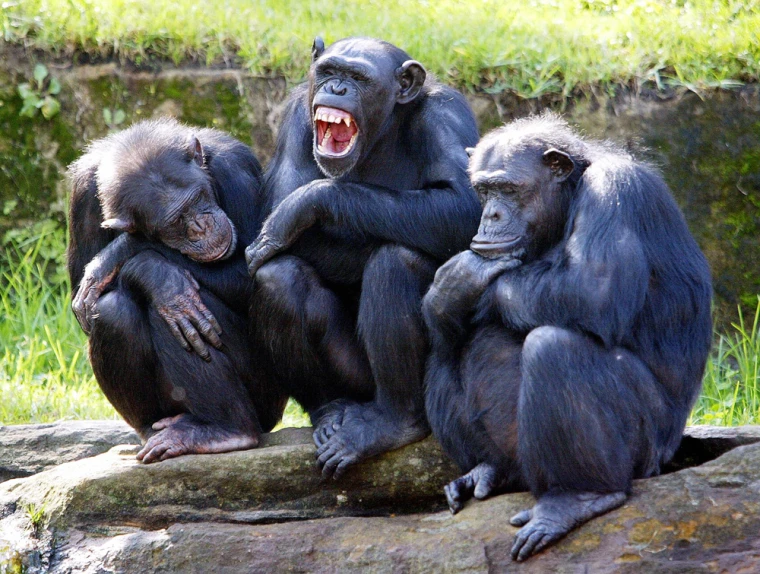Our story begins around 55 million years ago when the first true primates appeared. These early primates were small, tree-dwelling creatures with large eyes, adapted for a nocturnal lifestyle (active mainly at night). They are the ancestors of all modern primates, including monkeys, apes, and humans.
Reconstructed skeleton of Plesiadapis, an early primate, exhibited at the Museum of Natural Sciences of Belgium:

As time passed, these early primates evolved and diversified. By around 35 million years ago, the primate lineage had split into two main groups: the prosimians, which include lemurs and tarsiers, and the anthropoids, which include monkeys and apes. The anthropoids continued to evolve, and around 25 million years ago, the first true monkeys appeared. These early monkeys were small, agile, and well-adapted to life in the trees.
The monkeys eventually split into two major groups: the New World monkeys, which are found in South America, and the Old World monkeys, which are found in Africa and Asia. New World monkeys, like spider monkeys and howler monkeys, have prehensile tails, which they use like a fifth limb to grasp branches. Old World monkeys, like baboons and macaques, do not have prehensile tails, but they are incredibly diverse and adaptable, living in a wide range of environments from tropical forests to savannas.
Around 20 million years ago, another important split occurred. Some of the Old World monkeys began to evolve into the first apes. These early apes were larger and more intelligent than their monkey cousins, with more flexible limbs and a more upright posture. They also had larger brains, which allowed them to develop more complex behaviors and social structures. One group of these early apes, known as the hominids, eventually gave rise to the great apes, including orangutans, gorillas, and chimpanzees.

Around 6 million years ago, a branch of these hominids began to walk upright on two legs. This was the beginning of the human lineage. These early humans, known as hominins, continued to evolve. The first members of the genus Homo appeared around 2.5 million years ago. They were skilled hunters and gatherers, capable of making and using tools to survive. Over time, they continued to evolve and adapt to their changing environments. Around 300,000 years ago, Homo sapiens, our own species, first appeared in Africa.
Homo sapiens eventually spread across the world, outcompeting other hominin species like Neanderthals and Denisovans. We developed complex languages, created art, and built civilizations. Today, we are the only surviving members of the hominin family.
We’ve come through a long, intricate journey that began with those small, nocturnal primates in the trees. From them came the monkeys, and from the monkeys came the apes, and eventually, us.
Reference Links
https://en.wikipedia.org/wiki/Evolution_of_primates
https://open.lib.umn.edu/humanbiology/chapter/1-7-the-evolution-of-primates/
https://www.pbs.org/wgbh/evolution/library/faq/cat02.html
